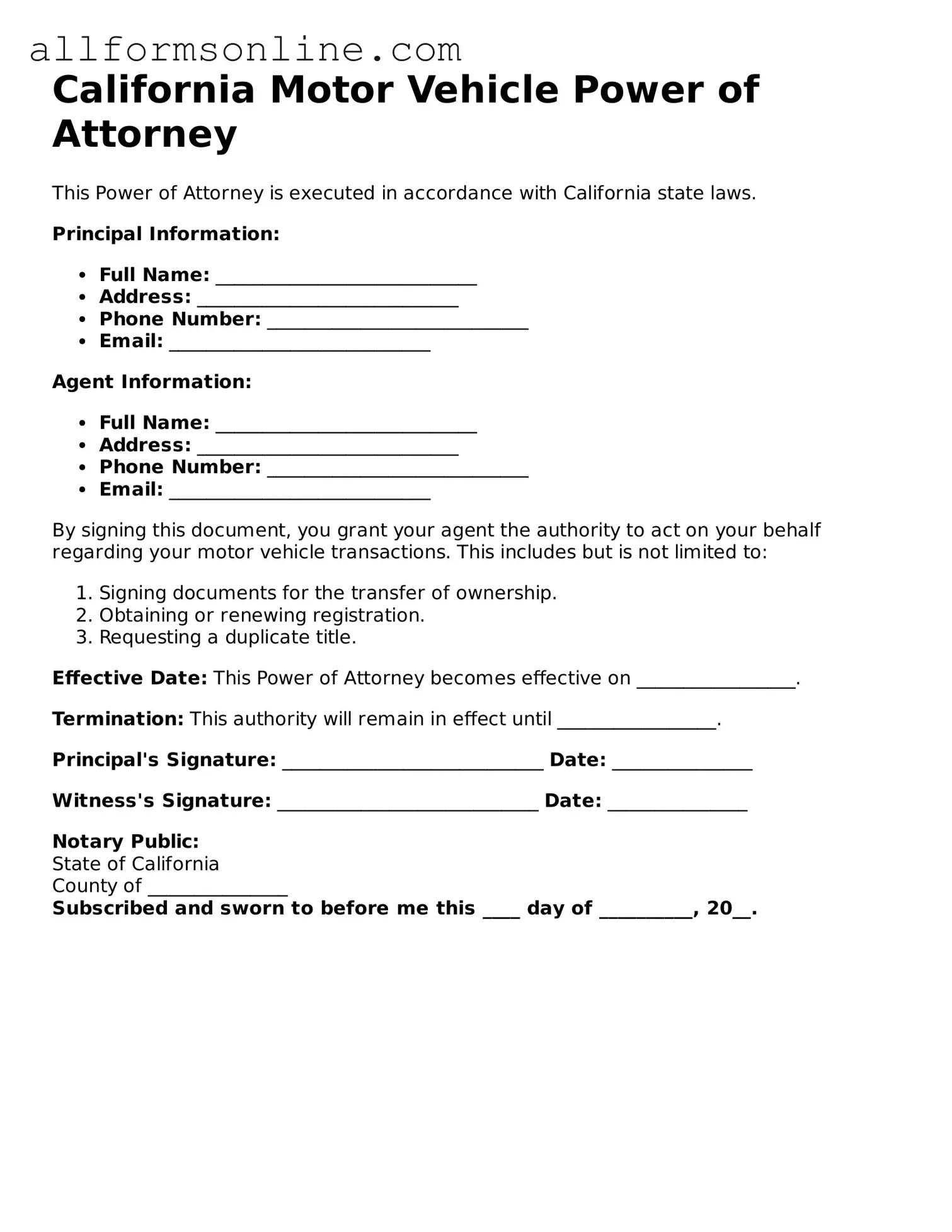What is a California Motor Vehicle Power of Attorney form?
The California Motor Vehicle Power of Attorney form is a legal document that allows one person to designate another person to act on their behalf regarding motor vehicle transactions. This can include tasks like registering a vehicle, transferring ownership, or obtaining title documents. It's a useful tool when the vehicle owner cannot be present to handle these matters personally.
Who can be designated as an agent in this form?
Any competent adult can be designated as an agent in the California Motor Vehicle Power of Attorney form. This could be a family member, friend, or even a professional such as a lawyer or a notary. The key is that the person you choose should be trustworthy and capable of handling the responsibilities assigned to them.
Do I need to have the form notarized?
No, the California Motor Vehicle Power of Attorney form does not require notarization. However, it must be signed by the person granting the authority. It's always a good idea to keep a copy of the signed form for your records, just in case any questions arise later.
What types of transactions can my agent perform?
Your agent can perform a variety of motor vehicle transactions. This includes signing documents for vehicle registration, transferring ownership, applying for a duplicate title, and even canceling a vehicle registration. Essentially, they can handle most tasks related to the vehicle as specified in the form.
Is there a specific format I must follow to complete the form?
While there is no strict format, the California DMV provides a standard form that is recommended for use. It’s important to fill out the form completely and accurately. Ensure that all necessary details, such as the vehicle identification number (VIN) and the names of both the principal and agent, are included to avoid any issues.
How long is the Power of Attorney valid?
The California Motor Vehicle Power of Attorney remains valid until the vehicle owner revokes it or until the specified tasks are completed. If you want to end the authority granted to your agent, you can do so at any time by providing written notice to your agent and, if necessary, the DMV.
Can I use this form for multiple vehicles?
Yes, you can use the California Motor Vehicle Power of Attorney form for multiple vehicles. However, you must list each vehicle separately on the form. This ensures that your agent has the authority to act on behalf of all specified vehicles without any confusion.
What should I do if I lose the Power of Attorney form?
If you lose the Power of Attorney form, it’s advisable to create a new one as soon as possible. You should also inform your agent and any relevant parties, such as the DMV, about the loss. This helps prevent unauthorized actions being taken on your behalf. Keeping a secure copy of the document can help avoid this situation in the future.
